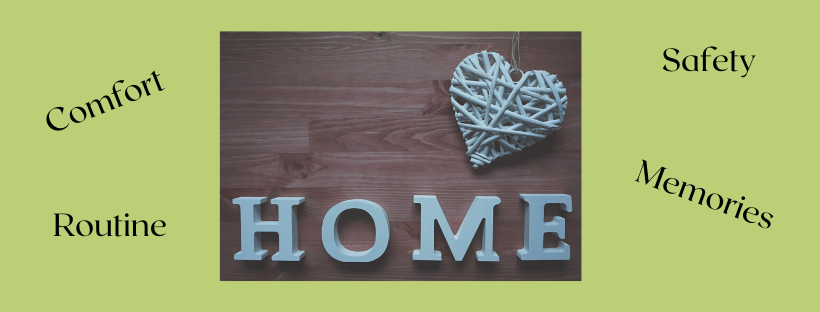
By: Julee Ann ( Leipprandt) Lockard & Kathy Garrett Subasic
With the stay at home order, we have been mainly spending our lives in our home. Even though some restrictions are being eased and more places are open for business, home still feels like the safest place to be. Many of us have been taking the opportunity to organize, clean and tackle home improvement projects. We are more acutely aware of what we love about our home and what we have been meaning to fix. We may start to see the pitfalls of our current homes like that turned up rug that trips us up from time to time or those basement stairs with no handrail that have become a little more difficult to climb.
Simple changes can be made to make recovery and caregiving easier and safer.
This increased awareness of barriers in our homes could be true for older adults, but also for family members of older adults. As cases of COVID-19 continue to spread in retirement centers and skilled nursing facilities, individuals are choosing to care for their loved ones in their own homes rather than having them stay in a facility. Older adults who have been discharged from the hospital after recovering from COVID-19 or other illnesses may also go to live with family for the duration of their recovery or for even longer. Most homes have not been designed with the needs of those recovering from illness or their caregivers. Simple changes can be made to make recovery and caregiving easier and safer including …
- widening walkways
- removing furniture to accommodate a walker
- adding a shower chair
- adding toilet rails
- lowering a bed
- raising a couch with furniture risers
Even though our home may have some pitfalls and barriers, when surveyed, nearly 9 of 10 people want to remain in their home as long as possible rather than move. With the rampant spread of COVID-19 through facilities, many more people are likely to consider what it will take to remain in their homes long term. Also, as we watch our livelihoods change through job loss or loss of a small business and our savings shrink, will we be able to recuperate the finances to afford a move to a facility? With the right modifications, staying at home for years to come can become the best option for many older adults.

Home has significant meaning. It consists of physical space of course, but also includes intangibles such as the comfort of familiar routines, memories from years gone by and our home community including our neighbors and the places we go. While focusing on our homes in this age of COVID-19, now is the perfect time to consider making changes to support aging in place such as replacing towel bars with attractive grab bars that have a towel bar attached and renovating a bathroom to include a walk-in shower and comfort height commode. Many changes can be considered to make a home safer and more accessible during a remodel. Other innovative, long term solutions including building a mother in law suite or installing a granny pod (modified guest house). Others are choosing to live with peers or siblings in accessible housing and hire assistants when needed.

Occupational Therapists (OTs) are board certified professionals that understand the nuances of home, family dynamics and aging. OTs who specialize in home modifications are uniquely positioned to lead the way for people to live their best lives at home. They offer a thorough assessment of the person’s distinct needs and goals as well as current and future abilities based on the normal aging process and specific disease processes. Involving a Home Modification Occupational Therapist in your home renovation will often yield cost savings due to their creative solutions and long-term perspective not considered by other professionals or general contractors. Home Modification Occupational Therapists also specialize in resources for accessibility products and will act as your advocate during the home remodeling process to ensure renovations are completed and equipment placed according to your specific goals and needs. Once all home renovations have been finished, the Home Modification Occupational Therapist provides education and training to make certain the client is comfortable in their ‘new’ home.
As we continue to spend much of our time at home, it is important for our home environment to support the activities we need and want to do. Home is so much more than a location, it is where we live.
To find a qualified Home Modification Occupational Therapist visit www.hmota.net. You may also contact the authors. Find Julee on LinkedIn and find Kathy at www.foreverhomect.com
Written by:
Julee Ann (Leipprandt) Lockard, MS, OTR/L, CAPS |Just Right At Home, LLC
and
Kathy Subasic PhD, OTR/L, CAPS, ECHM | Forever Home, LLC
